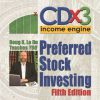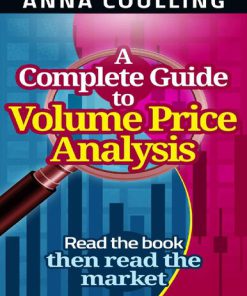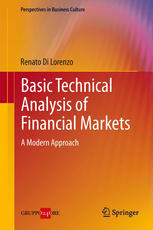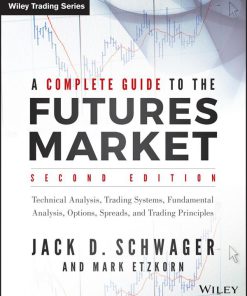Technical Analysis The Complete Resource for Financial Market Technicians 1st edition by Charles Kirkpatrick, Julie Dahlquist 0134137162 9780134137162
$50.00 Original price was: $50.00.$25.00Current price is: $25.00.
Technical Analysis The Complete Resource for Financial Market Technicians 1st edition by Charles D. Kirkpatrick, Julie R. Dahlquist – Ebook PDF Instant Download/DeliveryISBN: 0134137162, 9780134137162
Full download Technical Analysis The Complete Resource for Financial Market Technicians 1st edition after payment.
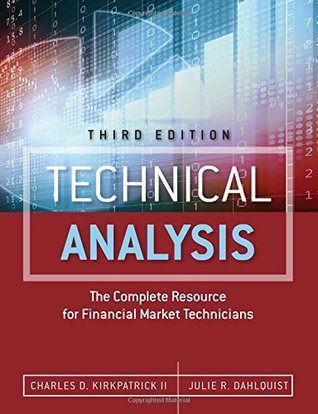
Product details:
ISBN-10 : 0134137162
ISBN-13 : 9780134137162
Author: Charles D. Kirkpatrick, Julie R. Dahlquist
Master technical analysis, step-by-step! Already the field’s most comprehensive, reliable, and objective introduction, this guidebook has been thoroughly updated to reflect the field’s latest advances. Selected by the Market Technicians Association as the official companion to its prestigious Chartered Market Technician (CMT) program, Technical Analysis, Third Edition systematically explains the theory of technical analysis, presenting academic evidence both for and against it. Using hundreds of fully updated illustrations and examples, the authors explain the analysis of both markets and individual issues, and present complete investment systems and portfolio management plans. They present authoritative, up-to-date coverage of tested sentiment, momentum indicators, seasonal effects, flow of funds, testing systems, risk mitigation strategies, and many other topics. Offering 30% new coverage, Technical Analysis, Third Edition thoroughly addresses recent advances in pattern recognition, market analysis, systems management, and confidence testing; Kagi, Renko, Kase, Ichimoku, Clouds, and DeMark indicators; innovations in exit stops, portfolio selection, and testing; implications of behavioral bias, and the recent performance of old formulas and methods. For traders, researchers, and serious investors alike, this is the definitive guide to profiting from technical analysis.
Technical Analysis The Complete Resource for Financial Market Technicians 1st Table of contents:
Part I: Introduction
Chapter 1. Introduction to Technical Analysis
Chapter 2. The Basic Principle of Technical Analysis—The Trend
Chapter Objectives
How Does the Technical Analyst Make Money?
What Is a Trend?
How Are Trends Identified?
Trends Develop from Supply and Demand
What Trends Are There?
What Other Assumptions Do Technical Analysts Make?
Conclusion
Review Questions
Chapter 3. History of Technical Analysis
Chapter Objectives
Early Financial Markets and Exchanges
Modern Technical Analysis
Current Advances in Technical Analysis
Chapter 4. The Technical Analysis Controversy
Chapter Objectives
Do Markets Follow a Random Walk?
Fat Tails
Large Unexpected Drawdowns
Proportions of Scale
Can Past Patterns Be Used to Predict the Future?
What About Market Efficiency?
New Information
Are Investors Rational?
Will Arbitrage Keep Prices in Equilibrium?
Behavioral Finance and Technical Analysis
Pragmatic Criticisms of Technical Analysis
What Is the Empirical Support for Technical Analysis?
Conclusion
Review Questions
Part II: Markets and Market Indicators
Chapter 5. An Overview of Markets
Chapter Objectives
In What Types of Markets Can Technical Analysis Be Used?
Types of Contracts
Cash Market
Derivative Markets
Swaps and Forwards
How Does a Market Work?
Who Are the Market Players?
How Is the Market Measured?
Price-Weighted Average
Market Capitalization Weighted Average
Equally Weighted (or Geometric) Average
Conclusion
Review Questions
Chapter 6. Dow Theory
Chapter Objectives
Dow Theory Theorems
The Primary Trend
The Secondary Trend
The Minor Trend
Concept of Confirmation
Importance of Volume
Criticisms of the Dow Theory
Conclusion
Review Questions
Chapter 7. Sentiment
Chapter Objectives
What Is Sentiment?
Market Players and Sentiment
How Does Human Bias Affect Decision Making?
Crowd Behavior and the Concept of Contrary Opinion
How Is Sentiment of Uninformed Players Measured?
Sentiment Indicators Based on Options and Volatility
Polls
Other Measures of Contrary Opinion
Unquantifiable Contrary Indicators
Historical Indicators
Unusual Indicators
How Is the Sentiment of Informed Players Measured?
Insiders
Sentiment in Bonds
Treasury Bond Futures Put/Call Ratio
Treasury Bond COT Data
Treasury Bond Primary Dealer Positions
T-Bill Rate Expectations by Money Market Fund Managers
Gold Sentiment
Conclusion
Review Questions
Chapter 8. Measuring Market Strength
Chapter Objectives
Market Breadth
The Breadth Line or Advance-Decline Line
Double Negative Divergence
Traditional Advance-Decline Methods That No Longer Are Profitable
Advance-Decline Line to Its 32-Week Simple Moving Average
Breadth Differences
Breadth Ratios
Breadth Thrust
Summary of Breadth Indicators
Up and Down Volume Indicators
The Arms Index
Volume Thrust with Up Volume and Down Volume
Ninety Percent Downside Days (NPDD)
10-to-1 Up Volume Days and 9-to-1 Down Volume Days
Net New Highs and Net New Lows
New Highs Versus New Lows
High Low Logic Index
Hindenburg Omen
Using Moving Averages
Coppock Curve
Number of Stocks Above Their 30-Week Moving Average
Very Short-Term Indicators
Breadth and New Highs to New Lows
Net Ticks
Conclusion
Review Questions
Chapter 9. Temporal Patterns and Cycles
Chapter Objectives
Periods Longer Than Four Years
Kondratieff Waves, or K-Waves
Population Waves
17–18-Year Alternating Stock Market Cycles
Decennial Pattern
Periods of Four Years or Less
Four-Year or Presidential Cycle
Election Year Pattern
Seasonal Patterns
January Signals
January Barometer
January Effect
Events
Conclusion
Review Questions
Chapter 10. Flow of Funds
Chapter Objectives
Funds in the Marketplace
Money Market Funds
Margin Debt
Funds Outside the Security Market
Household Financial Assets
Money Supply (M1 & M2)
Money Velocity
Yield Curve
Bank Liquidity
The Cost of Funds and Alternative Investments
Short-Term Interest Rates
Long-Term Interest Rates (or Inversely, the Bond Market)
Corporate Bond and Stock Market Yield Spread
The Misery Indices
Fed Policy
The Federal Reserve Valuation Model
Federal Funds
Free Reserves
Three Steps and a Stumble and Two Tumbles and a Jump
Conclusion
Review Questions
Part III: Trend Analysis
Chapter 11. History and Construction of Charts
Chapter Objectives
History of Charting
What Data Is Needed to Construct a Chart?
What Types of Charts Do Analysts Use?
Line Charts
Bar Charts
Candlestick Charts
What Type of Scale Should Be Used?
Arithmetic Scale
Semi-Logarithmic Scale
Point and Figure Charts
One-Box (Point) Reversal
Box Size
Multibox Reversal
Time
Arithmetic Scale
Logarithmic Scale
Cloud Charts (Ichimoku Kinko Hyo)
Other Charting Methods Independent of Time
Kagi Chart
Renko Chart
Line-Break Chart (2 or 3 Lines)
Conclusion
Review Questions
Chapter 12. Trends—The Basics
Chapter Objectives
Trend—The Key to Profits
Trend Terminology
Basis of Trend Analysis—Dow Theory
How Does Investor Psychology Impact Trends?
How Is the Trend Determined?
Peaks and Troughs
Determining a Trading Range
What Is Support and Resistance?
Why Do Support and Resistance Occur?
What About Round Numbers?
How Are Important Reversal Points Determined?
How Do Analysts Use Trading Ranges?
Directional Trends (Up and Down)
What Is a Directional Trend?
How Is an Uptrend Spotted?
Channels
Internal Trend Lines
Other Types of Trend Lines
Trend Lines on Point and Figure Charts
Speed Lines
Andrews Pitchfork
Gann Fan Lines
Conclusion
Review Questions
Chapter 13. Breakouts, Stops, and Retracements
Chapter Objectives
Breakouts
How Is Breakout Confirmed?
Can a Breakout Be Anticipated?
Stops
What Are Entry and Exit Stops?
Changing Stop Orders
What Are Protective Stops?
What Are Trailing Stops?
What Are Time Stops?
What Are Money Stops?
How Can Stops Be Used with Breakouts?
Using Stops When Gaps Occur
Placing Stops for a False (or “Specialist”) Breakout
Retracements
Pullbacks and Throwbacks
Waiting for Retracement
Calculating a Risk/Return Ratio for Breakout Trading
Conclusion
Review Questions
Chapter 14. Moving Averages
Chapter Objectives
What Is a Moving Average?
How Is a Simple Moving Average Calculated?
Length of Moving Average
Using Multiple Moving Averages
What Other Types of Moving Averages Are Used?
The Linearly Weighted Moving Average (LWMA)
The Exponentially Smoothed Moving Average (EMA)
Wilder Method
Geometric Moving Average (GMA)
Triangular Moving Average
Variable EMAs
Strategies for Using Moving Averages
Determining Trend
Determining Support and Resistance
Determining Price Extremes
Giving Specific Signals
What Is Directional Movement?
Constructing Directional Movement Indicators
Using Directional Movement Indicators
What Are Envelopes, Channels, and Bands?
Percentage Envelopes
Bands
Trading Strategies Using Bands and Envelopes
Channel
Conclusion
Review Questions
Part IV: Chart Pattern Analysis
Chapter 15. Bar Chart Patterns
Chapter Objectives
What Is a Pattern?
Common Pattern Characteristics
Do Patterns Exist?
Behavioral Finance and Pattern Recognition
Computers and Pattern Recognition
Market Structure and Pattern Recognition
Bar Charts and Patterns
How Profitable Are Patterns?
Classic Bar Chart Patterns
Double Top and Double Bottom
Rectangle (Also “Trading Range” or “Box”)
Triple Top and Triple Bottom
Standard Triangles
Descending Triangle
Ascending Triangle
Symmetrical Triangle (Also “Coil” or “Isosceles Triangle”)
Broadening Patterns
Diamond Top
Wedge and Climax
Patterns with Rounded Edges—Rounding and Head-and-Shoulders
Rounding Top, Rounding Bottom (Also “Saucer,” “Bowl,” or “Cup”)
Head-and-Shoulders
Shorter Continuation Trading Patterns—Flags and Pennants (Also “Half-Mast Formation”)
Long-Term Bar Chart Patterns with the Best Performance and the Lowest Risk of Failure
Conclusion
Review Questions
Chapter 16. Point and Figure Chart Patterns
Chapter Objectives
What Is Different About a Point and Figure Chart?
Time and Volume Omitted
Continuous Price Flow Necessary
“Old” and “New” Methods
History of Point and Figure Charting
One-Box Reversal Point and Figure Charts
Consolidation Area on the One-Box Chart (Also “Congestion Area”)
Trend Lines in One-Box Charts
The Count in a One-Point Chart
Head-and-Shoulders Pattern
The Fulcrum
Action Points
Three-Point (or Box) Reversal Point and Figure Charts
Trend Lines with Three-Box Charts
The Count Using Three-Box Reversal Charts
The Eight Standard Patterns for Three-Box Reversal Charts
Other Patterns
Conclusion
Review Questions
Chapter 17. Short-Term Patterns
Chapter Objectives
Pattern Construction and Determination
Traditional Short-Term Patterns
Gaps
Spike (or Wide-Range or Large-Range Bar)
Dead Cat Bounce (DCB)
Island Reversal
One- and Two-Bar Reversal Patterns
Other Multiple-Bar Patterns
Volatility Patterns
Intraday Patterns
Summary of Short-Term Patterns
Candlestick Patterns
One- and Two-Bar Candlestick Patterns
Multiple-Bar Patterns
Candlestick Pattern Results
Conclusion
Review Questions
Part V: Trend Confirmation
Chapter 18. Confirmation
Chapter Objectives
Analysis Methods
Overbought/Oversold
Failure Swings
Divergences
Reversals
Trend ID
Crossovers
Classic Patterns
Volume Confirmation
What Is Volume?
How Is Volume Portrayed?
Do Volume Statistics Contain Valuable Information?
How Are Volume Statistics Used?
Which Indexes and Oscillators Incorporate Volume?
Volume Spikes
Examples of Volume Spikes
Open Interest
What Is Open Interest?
Open Interest Indicators
Price Confirmation
What Is Momentum?
How Successful Are Momentum Indicators?
Specific Indexes and Oscillators
Conclusion
Review Questions
Part VI: Other Technical Methods and Rules
Chapter 19. Cycles
Chapter Objectives
What Are Cycles?
Other Aspects of Cycle Analysis
Translation
How Can Cycles Be Found in Market Data?
Fourier Analysis (Spectral Analysis)
Maximum Entropy Spectral Analysis
Simpler (and More Practical) Methods
Projections
Projecting Period
Projecting Amplitude
Conclusion
Review Questions
Chapter 20. Elliott, Fibonacci, and Gann
Chapter Objectives
Elliott Wave Theory (EWT)
Ralph Nelson Elliott
Basic Elliott Wave Theory
Impulse Waves
Corrective Waves
Guidelines and General Characteristics in EWT
Projected Targets and Retracements
Alternatives to EWT
Using EWT
The Fibonacci Sequence
Fibonacci
The Fibonacci Sequence
The Golden Ratio
Price and Time Targets
W. D. Gann
Conclusion
Review Questions
Part VII: Selection
Chapter 21. Selection of Markets and Issues: Trading and Investing
Chapter Objectives
Which Issues Should I Select?
Trading (Swing and Day)
Choosing Between Futures Markets and Stock Markets
Which Issues Should I Select for Investing?
Top-Down Analysis
Secular Emphasis
Cyclical Emphasis
Stock Market Industry Sectors
Bottom Up—Specific Stock Selection and Relative Strength
Relative Strength
Academic Studies of Relative Strength
Measuring Relative Strength
Examples of How Selected Professionals Screen for Favorable Stocks
William O’Neil CANSLIM Method
James P. O’Shaughnessy Method
Charles D. Kirkpatrick Method
Value Line Method
Richard D. Wyckoff Method
Conclusion
Review Questions
Part VIII: System Testing and Management
Chapter 22. System Design and Testing
Chapter Objectives
Why Are Systems Necessary?
Discretionary Versus Nondiscretionary Systems
A Complete Trading System
How Do I Design a System?
Requirements for Designing a System
Initial Decisions
Types of Technical Systems
How Do I Test a System?
Clean Data
Special Data Problems for Futures Systems
Testing Methods and Tools
Test Parameter Ranges
Optimization
Methods of Optimizing
Measuring System Results for Robustness
Conclusion
Review Questions
Chapter 23. Money and Portfolio Risk Management
Chapter Objectives
Risk and Money Management
Testing Money-Management Strategies
Money-Management Risks
Concepts
Reward to Risk
Normal Risks
Unusual Risks
Money-Management Risk Strategies
Protective Stop
Trailing Stop
Other Kinds of Stops
Targets
Execution
Monitoring Systems and Portfolios
If Everything Goes Wrong
Conclusion
People also search for Technical Analysis The Complete Resource for Financial Market Technicians 1st:
a technical requirements derived from moes
a technical review and examination that is conducted
a technical review process helps ensure that
technical resource library
complete the analysis
Tags: Technical Analysis, The Complete Resource, Financial Market, Technicians, Charles Kirkpatrick, Julie Dahlquist
You may also like…
Science (General)
Business & Economics - Personal Finance
Arts - Architecture
Engineering - Electrical & Electronic Engineering
Business & Economics
Commercial & Financial Law
Business & Economics - Investing
Business & Economics - Industries
Technique - Electronics


